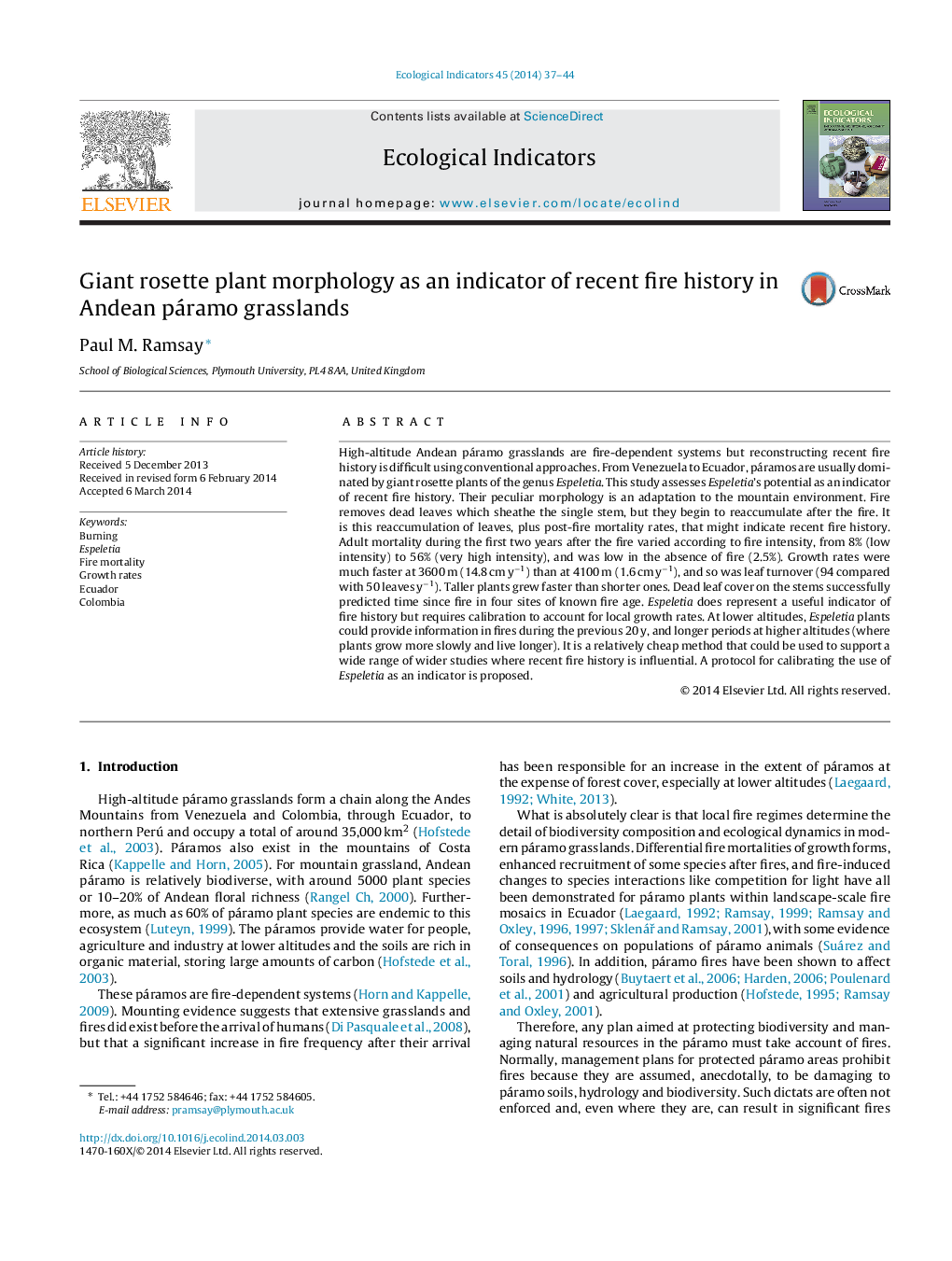| کد مقاله | کد نشریه | سال انتشار | مقاله انگلیسی | نسخه تمام متن |
|---|---|---|---|---|
| 4373042 | 1617156 | 2014 | 8 صفحه PDF | دانلود رایگان |
• Giant rosette plants are common in mountain grasslands of the Northern Andes.
• Mortality rates of adult plants reflected fire intensity.
• Accumulated dead leaves successfully predicted time since fire.
• Calibrated for local growth rates, these plants can indicate fire history cheaply.
• Reconstruction of fire mosaics would improve understanding of these ecosystems.
High-altitude Andean páramo grasslands are fire-dependent systems but reconstructing recent fire history is difficult using conventional approaches. From Venezuela to Ecuador, páramos are usually dominated by giant rosette plants of the genus Espeletia. This study assesses Espeletia's potential as an indicator of recent fire history. Their peculiar morphology is an adaptation to the mountain environment. Fire removes dead leaves which sheathe the single stem, but they begin to reaccumulate after the fire. It is this reaccumulation of leaves, plus post-fire mortality rates, that might indicate recent fire history. Adult mortality during the first two years after the fire varied according to fire intensity, from 8% (low intensity) to 56% (very high intensity), and was low in the absence of fire (2.5%). Growth rates were much faster at 3600 m (14.8 cm y−1) than at 4100 m (1.6 cm y−1), and so was leaf turnover (94 compared with 50 leaves y−1). Taller plants grew faster than shorter ones. Dead leaf cover on the stems successfully predicted time since fire in four sites of known fire age. Espeletia does represent a useful indicator of fire history but requires calibration to account for local growth rates. At lower altitudes, Espeletia plants could provide information in fires during the previous 20 y, and longer periods at higher altitudes (where plants grow more slowly and live longer). It is a relatively cheap method that could be used to support a wide range of wider studies where recent fire history is influential. A protocol for calibrating the use of Espeletia as an indicator is proposed.
Journal: Ecological Indicators - Volume 45, October 2014, Pages 37–44
